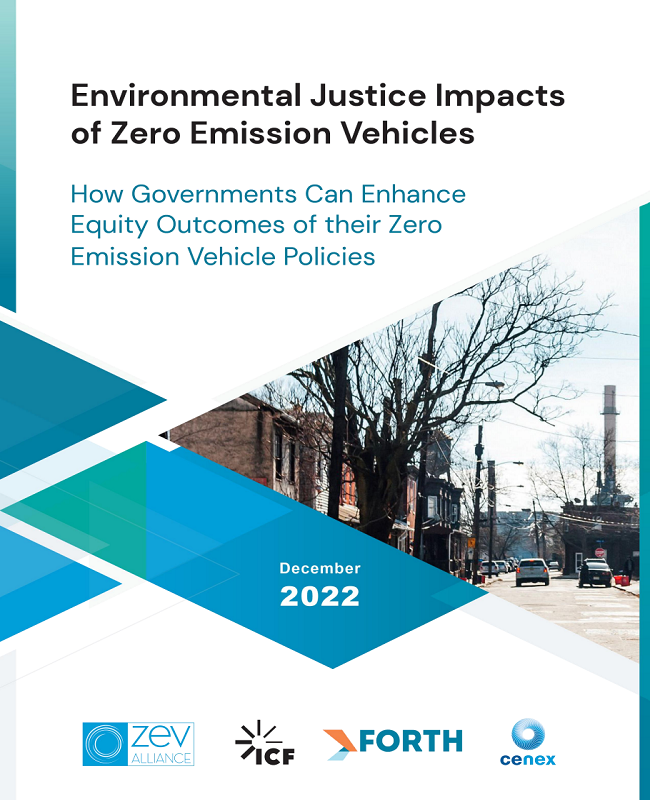Despite rapid growth in adoption of Zero Emission Vehicles (ZEVs) across the globe, only a small number of countries and regions—mainly the United States, China, and Northern Europe—claim most of the ZEV market share, while ZEV sales in other nations have less momentum. Even within countries with high ZEV sales, there are significant disparities between lower- and higher-income regions with respect to ZEV ownership and operation. ZEVs have great potential to improve public health, air quality, energy independence, and sustainability; however, challenges exist with respect to ZEV affordability and equitable access to fueling and charging infrastructure. Additionally, there is the question of how to best align policy interventions with equity (e.g., ensuring access for lower income groups), environmental justice (EJ), and global public good (e.g., emissions reductions).
This report highlights the existing disparity in ZEV ownership, quantifies the EJ benefits of ZEVs, and provides policy and program recommendations that government agencies can implement to enhance the EJ outcomes of their ZEV policies. Three ZEV markets—California, Michigan, and England—were selected for quantitative analysis of disparities in ZEV adoption, and of the major factors driving them in each market.
More About this Resource
Publisher: ZEV Alliance
Date: January 3, 2023
Type: Report
Tags: Charging Infrastructure, Electric Vehicles, Environmental Justice, MD/HD Vehicles, Underserved Communities, Workforce
Sector(s): Transportation
State(s): None
